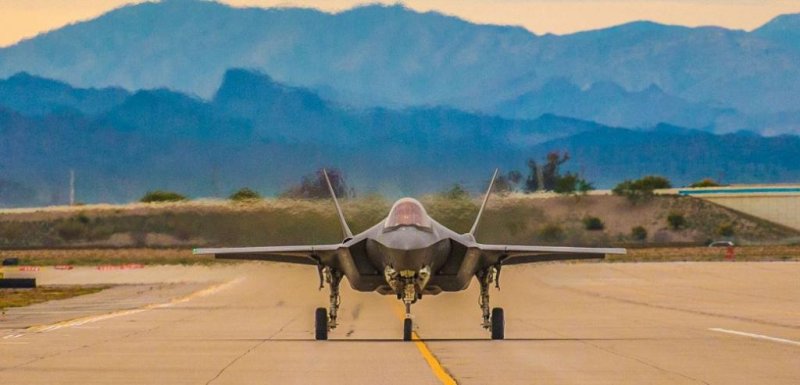The test fleet of F-35 fighter planes at Edwards Air Force Base, Calif., has a very low readiness rate, a report last week by the Project on Government Oversight said. Photo by Senior Airman Caleb Worpel/U.S. Air Force/UPI
Aug. 12 (UPI) -- F-35 fighter planes at California's Edwards Air Force Base have a very low readiness rate, a non-governmental watchdog said.
The Project on Government Oversight's Center for Defense Information reported last week that only 8.7 percent, of the 23 F-35s Joint Strike fighter planes in the Edwards AFB operational test fleet were "fully mission capable" in June 2019, when analysis of data from the Pentagon's Joint Program Office was begun.
"The revelation that the F-35 program is struggling to overcome the last hurdle before it can legally move into full-rate production follows numerous recent reports, including by POGO as well as the Government Accountability Office, indicating the most expensive weapon system in history is far from ready to face current or future threats," the POGO report said.
It noted that the planes' Distributed Aperture System, which generates imagery of incoming threats on $400,000 pilots' helmets, is a frequent source of failure. While the planes can still fly with certain non-functioning systems, the report said, "to fully test the program's capabilities, all systems must function properly."
An April report by the government's General Accounting Office reached similar, disparaging conclusion. It cited spare parts shortages and limited repair capabilities, making F-35 planes throughout the U.S. military "unable to fly nearly 30 percent of the May-November 2018 time period. Also, the Department of Defense had a repair backlog of about 4,300 F-35 parts."
It referred to the readiness rate as "abysmal," and added that readiness figures for all the flight programs of the U.S. Air Force are declining. All 5,400 planes in the Air Force fleet had a "mission capable" rate, indicating they could complete at least one of their assigned tasks, of 77.9 percent.
That figure slid to 69.97 percent by 2018, and then-Secretary of Defense James Mattis demanded a capability rate of 80 percent. The goal has not been achieved, and current Defense Secretary Mark Esper said in July that the fleet of F-35s of the Army, Navy and Marines "is not expected" to meet Mattis's goal of readiness.
In May, a subcommittee U.S. House Appropriations Committee approved only half the funding for the Pentagon's spare parts purchases for F-35 planes, citing the GAO report.















